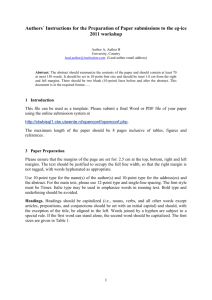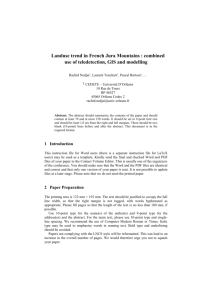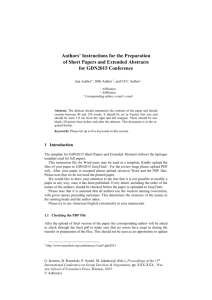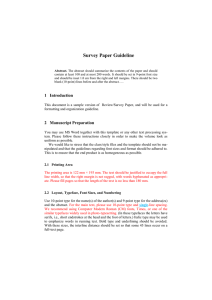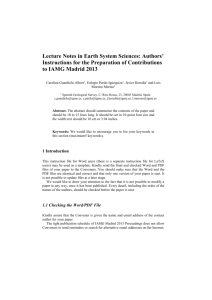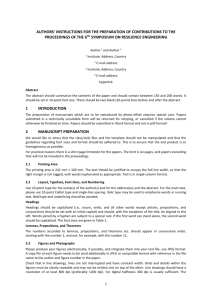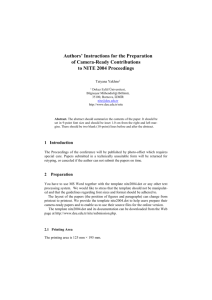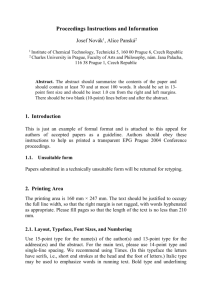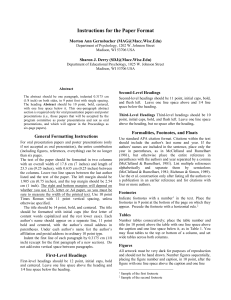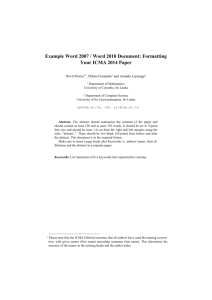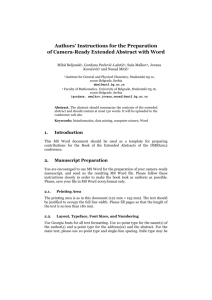Lecture Notes in Earth System Sciences: Authors* Instructions for
advertisement
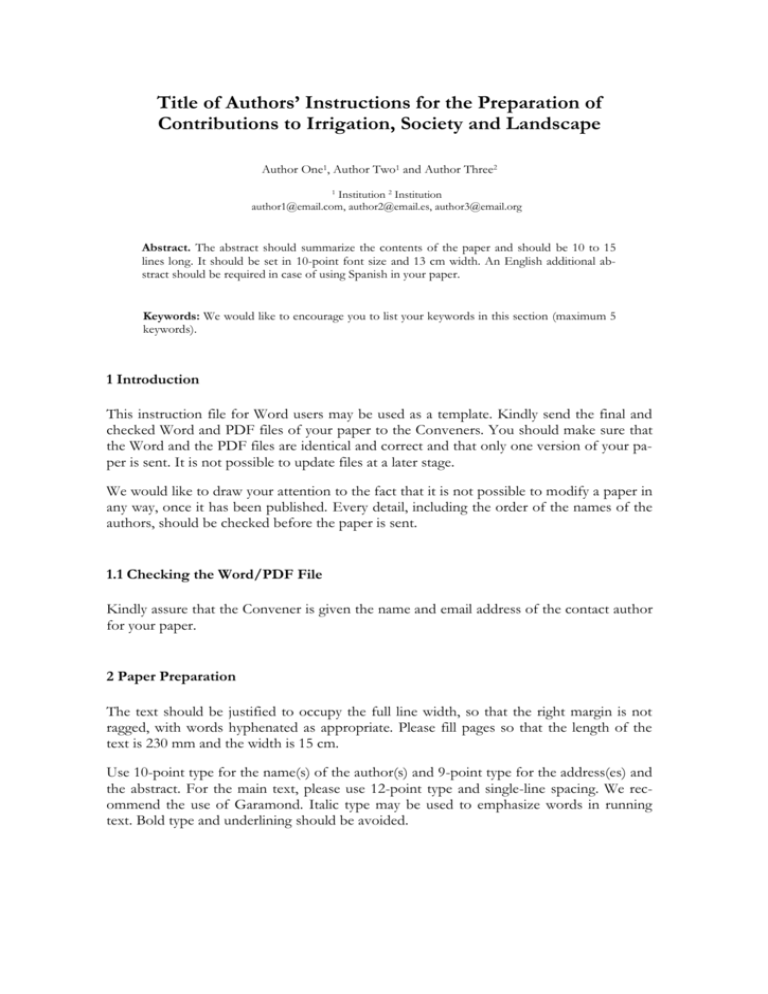
Title of Authors’ Instructions for the Preparation of Contributions to Irrigation, Society and Landscape Author One1, Author Two1 and Author Three2 1 Institution 2 Institution author1@email.com, author2@email.es, author3@email.org Abstract. The abstract should summarize the contents of the paper and should be 10 to 15 lines long. It should be set in 10-point font size and 13 cm width. An English additional abstract should be required in case of using Spanish in your paper. Keywords: We would like to encourage you to list your keywords in this section (maximum 5 keywords). 1 Introduction This instruction file for Word users may be used as a template. Kindly send the final and checked Word and PDF files of your paper to the Conveners. You should make sure that the Word and the PDF files are identical and correct and that only one version of your paper is sent. It is not possible to update files at a later stage. We would like to draw your attention to the fact that it is not possible to modify a paper in any way, once it has been published. Every detail, including the order of the names of the authors, should be checked before the paper is sent. 1.1 Checking the Word/PDF File Kindly assure that the Convener is given the name and email address of the contact author for your paper. 2 Paper Preparation The text should be justified to occupy the full line width, so that the right margin is not ragged, with words hyphenated as appropriate. Please fill pages so that the length of the text is 230 mm and the width is 15 cm. Use 10-point type for the name(s) of the author(s) and 9-point type for the address(es) and the abstract. For the main text, please use 12-point type and single-line spacing. We recommend the use of Garamond. Italic type may be used to emphasize words in running text. Bold type and underlining should be avoided. 2.1 Headings Please use the decimal system of headings with no more than four levels. Headings should, with the exception of the title, be aligned to the left. The font sizes are given in Table 1. Table 1. Font sizes of headings. Table captions should always be positioned above the tables Heading level Example Title (left) Lecture Notes … 1st-level heading 1 Introduction 2nd-level head2.1 Printing Area ing 3.1.1 Headings Text 3rd-level heading follows 4th-level heading a) Remark Text follows Font size and style 16 point, bold 12 point, bold 12 point, bold, italic 12 point, bold 12 point 2.2 Citations For citations in the text please use superscript 1. 2.3 Figures Please check that the lines in line drawings are not interrupted and have a constant width. Grids and details within the figures must be clearly legible and may not be written one on top of the other. Line drawings should have a resolution of at least 800 dpi (preferably 1200 dpi). The lettering in figures should have a height of 2mm (10-point type). Figures should be numbered and should have a caption which should always be positioned under the figures. Caption belonging to a table should also appear under the table. Please center the captions between the margins and set them in 12-point type (Fig. 1 shows an example). 2.2.1 Remark Colored pictures are free of charge. 1 Please avoid long footnotes Fig. 1. The distance between figure and caption should be about 6mm. 2.4 Page Numbering and Running Heads There is no need to include page numbers. Acknowledgments. The heading should be treated as a 3rd level heading and should not be assigned a number. 3 The References Section You should check your references thoroughly. We only accept references written using the latin alphabet. The following section shows a sample reference list with entries for journal articles [1], a chapter [2], a book [3], as well as an institutional URL [4]. References 1. Glick, T.F. (1968): Levels and Levelers: Surveying Irrigation Canals in Medieval Valencia, Technology and Culture, 9:165-180. 2. Trawick, P. (2008): Scarcity, Equity, and Transparency: General Principles for Successfully Governing the Water Commons, in E. Wiegandt, Ed., Mountains: Sources of Water, Sources of Knowledge, Springer, pp. 43-61. 3. Hall, W.M.H. (1886): Irrigation development: history, customs, laws, and administrative systems relating to irrigation, watercourses, and waters in France, Italy, and Spain, Sacramento, California State Office. 4. Cultural Landscapes Reial Séquia de Moncada, http://www.paisatgesculturals-rsm.org
